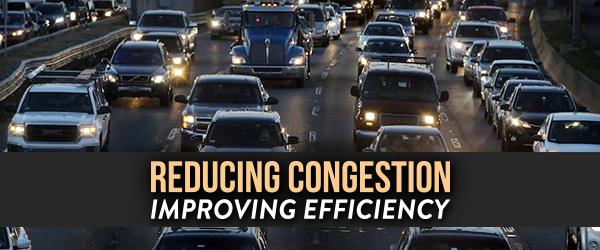
Autonomous Vehicles and the IoT: Reducing Congestion, Improving Efficiency
As seen with the emergence of IoT and smart devices in revolutionizing industrial technology, the introduction of autonomous vehicles (AVs) poses a significant opportunity to advance human efficiency within the interconnected network. When it comes to urban transportation systems, autonomous vehicles can improve the efficiency of large-scale mass transit, but also reduce congestion and impact the environment by reducing the size of a city’s carbon footprint. How can autonomous vehicles help city planners achieve these goals? We will explore the future of this agile technology and the relation to the Internet of Things (IoT) here.
The Hopeful Future of Autonomous Vehicles
Environmental
The average lifespan of a vehicle today is around 150,000 miles with normal use. Semitrailers, however, are designed to operate for 1,000,000 miles. The design and integration of IoT technology allow for these vehicles to operate longer and more efficiently. As autonomous vehicles are given a chance to rise in popularity and usefulness, manufacturers and car designers could design compact cars that closely match the longevity of semitrailers and rail cars.
Moreover, if the data proves that autonomous vehicles are safer than manual driving, automotive designers have a great opportunity to improve the size and shape of a mechanical body dramatically. Lighter, smaller autonomous vehicles could prove more fuel efficient, and consumers will appreciate the ability to get a longer lifespan out of their vehicles.
This change will call for a revolution in the current transportation infrastructure on some levels. Importantly, a present-day barrier to the adoption of electric cars is due in part to the lack of available charging stations. A solution to this problem lies in technological developments in recharging infrastructure. Autonomous vehicles will have the intelligence to plan journeys of time to include pit stops at charging stations.
Traffic Congestion
Through their interconnectivity via the IoT, autonomous vehicles will make roads safer through better traffic flows. That connectivity doesn’t come easily, however. Connectivity requires superior data-gathering, video processing, and analytical power.
Utilizing edge computing, where the data produced by IoT technology is processed closer to where the data is created (rather than sending the information to remote data centers or clouds), also helps with the timely processing of traffic information and reducing M2M latency.
This superior connectivity enables and incorporates advanced AI-based traffic management and navigation services via smart streets that connect to sensors in autonomous vehicles, optimized traffic signals, predictive merging, and slowdowns.
SYNDÉO is paving the way to create space under city-owned Right-Of-Way (ROW) for the deployment of edge computing systems that support advanced traffic management. They also offer cities a superior method to secure and conceal smart city technology at strategic locations. Use cases include small cells, antennas, sensors, cameras, beacons, edge computing, and more.
Laying the infrastructure necessary to make autonomous vehicles a reality, mini-vaults are a key asset to house IoT technology, They also serve a dual purpose. Their load-bearing surface detectable warning panel protects the subsurface enclosure while also providing a physical and visual cross-walk cue to the visually impaired.
In the future, autonomous vehicles and IoT will be a fully-connected reality. They will ultimately collaborate to autonomously control traffic fluctuations and enhance civilian safety via traffic signal controllers and systems. For instance, phantom traffic jams, in which a leading car suddenly pumps their breaks and causes a “slow-down” for all the cars behind it, could be a thing of the past. Autonomous vehicles can introduce sensory-based speed control, which will reduce phantom traffic jams and lower associated fuel costs.
Cost Savings & Fuel Efficiencies
There are several cost-associated benefits that autonomous vehicle adoption offers. Platooning, in which fleets of driverless cars and trucks operate by driving behind one another in tight formation, will save fuel and time for drivers – reducing the strain on infrastructure. Platooning saves fuel by reducing wind resistance and using the roads more efficiently. The result? Less congestion and fewer unproductive people sitting in heavy traffic congestion. In fact, “Texas researchers predict that tightly spaced, autonomous platoons could reduce traffic jam delays by 60 percent on highways and by 15 percent on suburban roads.”
AVs could also use the other vehicles more strategically for better fuel efficiency. These cars and trucks in coordination with each other, could brake and accelerate more gradually, and in turn, offer drivers a resultant fuel savings of 15 to 20 percent. Moreover, more efficient use of autonomous vehicles could also offer a reduction of CO2 emissions of 20 million to 100 million tons per year.
Autonomous vehicles have a bright future when considered alongside the IoT and smart city growth trends. The combination of energy-saving, environmental, and traffic control and driver safety benefits are attractive to both consumers and city planners who will eventually be faced with the choice of full adoption of these systems. Forward-thinking companies, such as SYNDÉO, are key partners in this time of growth, and they are vital to enabling cities’ infrastructure that will support this future. By aiding in the successful connectivity between automated devices, everyday efficiencies, human safety and quality of life will improve.

